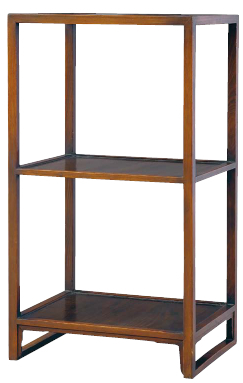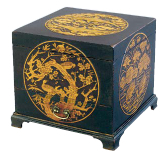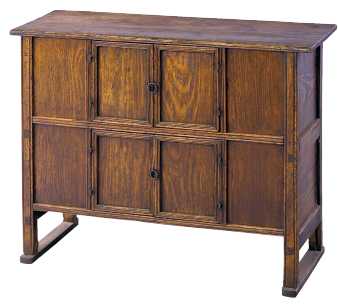Gallery Hyundai showcases 60 pieces of Joseon Dynasty wooden furniture, including renowned artists’ possessions
The wooden surface was smoothened over time until it shone like glass. The 18th-century book chest owned by Lee U-fan is among the 60 pieces of Joseon-period furniture on display at Dugahun Gallery.
“When I look at the Joseon Dynasty wooden furniture like tables and book chests, a smile comes to my face because of their striking vagueness. Should I say it is full of contradictions?” wrote the South Korean artist about the book chest in a book published alongside the show.
The wooden surface was smoothened over time until it shone like glass. The 18th-century book chest owned by Lee U-fan is among the 60 pieces of Joseon-period furniture on display at Dugahun Gallery.
“When I look at the Joseon Dynasty wooden furniture like tables and book chests, a smile comes to my face because of their striking vagueness. Should I say it is full of contradictions?” wrote the South Korean artist about the book chest in a book published alongside the show.


The exhibition currently running at Dugahun Gallery and Gallery Hyundai in Sagan-dong, central Seoul, is titled “Artists’ Cherished Joseon Dynasty Wooden Furniture.”

The title is a bit of an exaggeration ― only six of the exhibits are owned by renowned artists or their heirs. But the list of artists ― Lee U-fan, Kim Whan-ki, Seo Se-ok, Chang Ucchin, Song Young-bang and Kim Jong-hak ― represents well-known modern artists of Korea, making a visit worthwhile to check out the charm of the wooden furniture that captured them.
“My grandmother once told me, that sometimes when my father requested some money and she sent it to him by selling something, he would buy antiques. If the item was too big and dangerous to be delivered, he would do it himself by carrying it over his shoulders and walking for hours following mountain roads,” wrote Kim Geum-ja, daughter of Kim Whan-ki. Kim offered her father’s bookshelf for the exhibition.
Song Young-bang, who lent an inkstone desk for the show, said an inkstone desk is all the more precious and beautiful if it was used by a “seonbi,” or Joseon-period literati.
“I think this inkstone desk was once bought by a seonbi who knew style and beauty. I stroke it, feel the accumulated time, and always keep it by me,” said Song.

The six items are not for sale, but the rest of the exhibits, owned by other private collectors, are.
Exhibits range from desks, brush stands and bookshelves from “sarangbang,” a study reserved for seonbi; clothing chests, comb chests and mirrors from the main room; tables, cupboards and pantries from the kitchen; and other miscellaneous items.
“Joseon-period wooden furniture show our ancestor’s high aesthetic sense and wisdom, and are fit to be considered representative artworks of Korean beauty. At the exhibition, visitors will be able to see how the furniture’s character and form differed according to the place it was placed,” said Ko Hee-kyung, curator and head of the PR department at Gallery Hyundai.
On Sept. 2, Park Young-gyu, Yongin University professor and former committee member of the Cultural Heritage Administration, will give a lecture on Joseon-period wooden furniture at the gallery.
The exhibition runs through Sept. 25 at Gallery Hyundai and Dugahun Gallery in Sagan-dong, central Seoul. For more information, call (02) 2287-3552 or visit www.galleryhyundai.com.
By Park Min-young (claire@heraldcorp.com)


















![[Today’s K-pop] Treasure to publish magazine for debut anniversary](http://res.heraldm.com/phpwas/restmb_idxmake.php?idx=642&simg=/content/image/2024/07/26/20240726050551_0.jpg&u=)